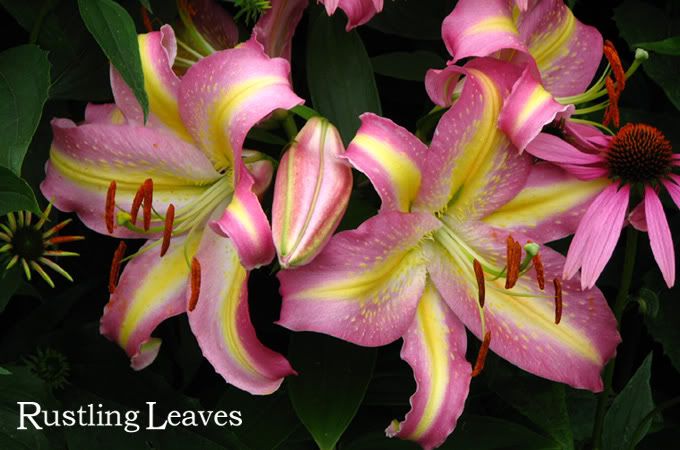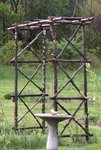I selected this variety because it is free-flowering and has outstanding vigor with a robust growing habit.
When the word "Iris" is mentioned, many people will be thinking of hardy garden Iris. Most are classified as Tall Bearded and the botanical name is Iris germanica but never mind, they are the Iris for most gardeners and it is easy to see why. Thoroughly hardy, they are adaptable to a range of environments, thriving here in the east in moist soils and cold temps and being equally at home as drought tolerant stalwarts out west. Along with garden Primulas and Lupinus, Pansy/Violas, and Salvias, Bearded Iris are available in every color and can top them all by spicing it up with a dizzying array of multi-tones, sprinkles, and edges.
My Mom had an enormous bed of Iris in colors of yellow and purple and a few whites. They were never divided or replanted and over the years had become such an entanglement of overlapping rhizomes that isolating and tracing individual plants to their origins was impossible. They bloomed every spring, enhancing the garden with a deep and intoxicating aroma that to this day, when I catch a whiff will always associate with the color purple.
On a road trip once, Beth and I caught a small roadside sign signaling a nearby Iris farm was open. We followed the sign on our return home and proceeded climbing a steep hill to the nursery. Large and deep beds were burgeoning with arrays of color that it was apparent why Iris had been named after the rainbow goddess. We spent several hours walking the beds and admiring the plants, trying to whittle our wants down and making hard purchasing decisions. The nursery was a retired couple's dream and it's one I sometimes reflect on.
As with Hemerocallis (daylilies), the ranks of hybrids number in the deca-thousands. With such endless choices, choosing a variety for the garden is not easy. I'm a sucker for their colors and am always attracted to the reds and browns. Sometimes it's a yellow I'm after but then there are the near-blacks to consider. The pale colors that look as if clouds have been resting on their surfaces, leaving traces of themselves behind, always attract my interest. Well, you see how it goes. In some far distant future I would like to create a bed composed of blues in colors of sky, confederate, wedgewood, royal and navy with some whites added for spicing to simulate a water's edge on land.
But what I most want from the Beardeds are good growers with clean foliage. I realize as a former breeder of plants there is an unceasing pressure to release new varieties annually. But sometimes plants are released that are not representative of a breeder's best work. Flower form and color, always paramount goals, may be there but if the plant has weak and sparse stems, awkward proportions, slow to grow and increase in size, or susceptible to disease it should have been composted or burned and not made into a new variety. I feel if a new variety does not improve on existing lines of color and form they should also be culled out of existence. And yet the monetary costs of the breeding work have to be recouped at some point. It is an ethical decision every breeder must face and it isn't an easy one.
I am currently excited by a new-but-old variety for me. Received as a gift from friends, it was found on their property amidst a young woodland. I'm theorizing they are relics of an old garden site and the seedlings and saplings of trees have grown through them. I know they will be purple but that won't change my eagerness to see them. They are the plants with the green nubbins I wrote about earlier and their look of being fresh and full holds much promise.
Beth and I brought many plants with us when we moved to New York but there are three groups of plants I wish hadn't been left behind. I didn't know lilies would thrive here and regret they didn't make the trip with us. I had a collection of unnamed large-flowered Clematis of Japanese breeding work and they also are no longer with us. The last one was an Iris Beth bought on a Yahoo! plant auction, before the days of juggernaut e-bay. It came from Missouri and had simple flowers without the ruffles and steroidal look of today's hybrids. The plants grew vigorously and were chock-a-block full of stems; they also had the cleanest, freshest foliage of any Iris I have ever seen. I miss those Iris.
Tomorrow: Saying hello to Siberians




1 Comment:
Good words.
Post a Comment